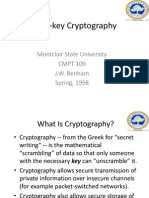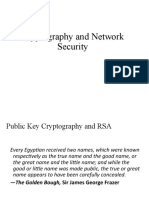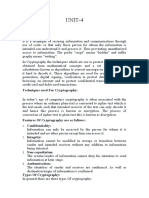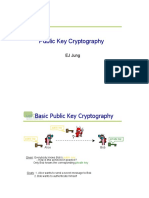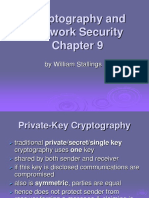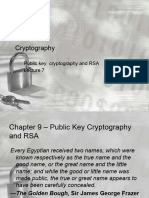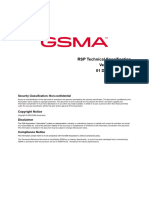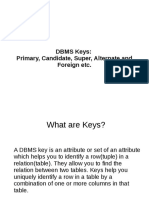0% found this document useful (0 votes)
87 views23 pagesPublic-Key Cryptography Guide
Public-key cryptography uses a pair of keys (public and private) to encrypt and decrypt messages. It allows secure transmission over insecure channels. RSA is an important public-key encryption algorithm that is widely used today. It relies on the fact that factoring large numbers is computationally difficult, so decrypting a message without the private key is infeasible.
Uploaded by
Shaheer ArshadCopyright
© © All Rights Reserved
We take content rights seriously. If you suspect this is your content, claim it here.
Available Formats
Download as PDF, TXT or read online on Scribd
0% found this document useful (0 votes)
87 views23 pagesPublic-Key Cryptography Guide
Public-key cryptography uses a pair of keys (public and private) to encrypt and decrypt messages. It allows secure transmission over insecure channels. RSA is an important public-key encryption algorithm that is widely used today. It relies on the fact that factoring large numbers is computationally difficult, so decrypting a message without the private key is infeasible.
Uploaded by
Shaheer ArshadCopyright
© © All Rights Reserved
We take content rights seriously. If you suspect this is your content, claim it here.
Available Formats
Download as PDF, TXT or read online on Scribd
/ 23
